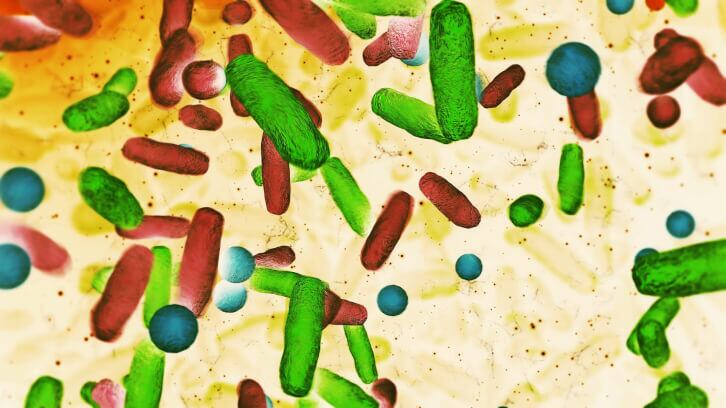Denmark-based Lactobio currently focuses on the skin, vaginal, and gut microbiota to create new microbiome and microbial solutions to target such conditions as acne and eczema. The company was selected as a Probiota Pioneer at Probiota 2022 in Copenhagen.
To get a better understanding on the current state of the market, consumer understanding, and the regulatory landscape, we caught up with Lactobio on all things skin microbiome.
1. The gut-skin axis – how has the science advanced on that in the last couple of years? Do we understand the mechanisms of action?
Lactobio: The science within the gut-skin axis has been a dynamic and evolving process evolved from a relatively obscure concept to a well-established field of research. It has provided valuable insights into the relationship between gut health and skin health, this axis highlights the bidirectional communication between these two seemingly unrelated organs. A much better understanding about this connection is leading to new approaches for the prevention and treatment of various skin conditions.
As our understanding of this relation and interaction continues to grow, it holds promise for further advancements in dermatology and skincare, as well as a more holistic approach to healthcare in general.
Multiple modes of action are in play, immune system modulation is one mechanism. The gut plays a crucial role in training and regulating the immune system and the gut microbiota can influence the systemic immune response, and alterations in the gut microbiome can therefore lead to immune-related skin disorders. The gut is also responsible for absorbing nutrients from the diet, and it is known that deficiencies in certain nutrients can affect skin health. For example, deficiencies in vitamins, minerals, and omega-3 fatty acids can impact skin conditions like dryness, acne, and dermatitis.
The use of probiotics (beneficial bacteria) and prebiotics (compounds that promote the growth of beneficial bacteria) have gained attention as potential interventions for improving gut health and, subsequently, skin health. Specific probiotic strains can impact skin health also by modulation of the immune response and reduce inflammation.
2. From a topical perspective, do we have a good knowledge on the skin microbiome in the key biological niches (scalp, armpit, face, etc)?
Lactobio: Research has provided insights into the microbiomes of various skin niches, including the scalp, armpits (axillae), and face. The human skin is a complex ecosystem with different regions harboring distinct microbial communities and a high degree of individual differences.
It's important to note that the microbiome of each skin niche can vary from person to person due to individual factors like genetics, hygiene practices, diet, and environmental exposures. Knowledge about the skin microbiome and skin dysbiosis is still lacking behind the knowledge about the gut, likely due to the techniques and sampling available. More advanced DNA sequencing techniques, have allowed for a more detailed characterization of these skin microbiomes and future research will bring much more knowledge about the skin microbiome and how alterations in these microbiomes can contribute to skin conditions and diseases, also leading to topical skin care and treatments that directly target the skin microbiome to maintain or restore skin health.
The scalp is a unique skin niche with its own microbiome. It is colonized by bacteria, including species like Propionibacterium and Staphylococcus and yeast e.g., Malassezia. These microorganisms are typically involved in maintaining scalp health and can sometimes play a role in conditions like dandruff and seborrheic dermatitis. The scalp microbiome is influenced by factors such as hair care practices, genetics, and environmental conditions.
The axillary region has a distinct microbiome that is characterized by a higher density of sweat glands and a different composition of bacteria compared to other skin areas. Sweat and apocrine glands in the armpits produce compounds that can be metabolized by specific bacteria, leading to body odor. Staphylococcus and Corynebacterium species are commonly found in the armpit microbiome. Deodorants and antiperspirants typically will influence the composition of the armpit microbiome.
The facial skin is exposed to various environmental factors, and its microbiome can vary depending on factors such as skin type, sex (hormones), age, and skincare routines. Research has identified a range of microorganisms on the face; mites, viruses, fungi, yeast, and bacteria, including bacterial species from the genera Propionibacterium, Staphylococcus, and Cutibacterium. These microorganisms play a role in maintaining skin health and can influence skin conditions like acne, however, there is still a lack of understanding of how microbiome dysbiosis are involved in different skin issues and diseases.
Acne is an example of a microbial dysbiosis which is not well understood, and with different microbial dysbiosis associated with acne, not just with individual differences but also depending on biological niche, as the dysbiosis can be different in facial acnes as compared to back acne.
3. Do postbiotics offer a significant advantage over probiotics from a topical formulation perspective? How advanced is the science of postbiotics in topical skin care?
Lactobio: Yes, postbiotics are much easier to formulate into traditional cosmetic products. The key issue in relation to probiotic skin care is consumer (or industry?) demand of products with stability at room temperature for two years, probiotics are live microorganisms and thus very difficult to stabilize in cosmetic products, and these products are therefore still in the early state being very mild and preservative free to secure as much viability of the probiotic strains as possible.
Postbiotics do not have the same issues in formulations, postbiotics does however come with a challenge, as these ingredients are typically very sensitive to spoilage and needs preservation. Preservatives in skin care products can influence the skin microbiome and perhaps even contribute to dysbiosis, therefore postbiotics and probiotics are to be considered two different types of ingredients.
The term postbiotics is used for very different skin care ingredients, and there is still limited science available for how to characterize the skin care properties of postbiotics. The term is used for ingredients which are just single organic acids, and also used for very complex ingredients comprising multiple microbial derived metabolites.
4. Do consumers understand the difference between probiotics, prebiotics, and postbiotics in cosmetic and personal care formulations?
Lactobio: No, not in general, there is a need for more communication and education. The terms are not well regulated in the cosmetic and personal care industry which is leading to wrong use of the terms and to consumer confusion. The misuse of the terms does make it more difficult to communicate the difference between probiotics, prebiotics and postbiotics. However, there is a growing group of consumers with high interest in the skin microbiome and personal care products to support the skin microbiome. Also increased awareness about how the use of probiotic skin care may involve a change the daily skin care routine.
5. Are some markets more developed than others for skin microbiome products (Asia vs US vs Europe)?
Lactobio: We have seen interest from all markets and are not sure we can distinguish the markets in that sense. In some markets communications have been easier. In northern Europe, Scandinavia, and parts of the US and Asia, there is an awareness already of the chemistry used in personal care products, the influence of the skin microbiome on skin health and increased interest in natural products and reducing the exposure to harsh chemistry.
6. Are there any regulatory challenges in the key markets to further develop these products?
Lactobio: Most jurisdictions have some kind of hygiene regulation against having microorganisms in cosmetics and personal care products, also including microbiology stability testing as being part of the registration. Microorganisms are considered contamination, spoilage, and a potential risk. Therefore, regulatory challenges are considerable in most jurisdictions to ensure safety of the products and the microorganism, especially the safety of the specific strain(s), being used in the products.
7. Where are the key scientific knowledge gaps in the area of the skin microbiome?
Lactobio: The interactions between cells and communities are still not understood, this is both the interactions in between microbial cells and between microorganisms and human cells. This is both for the healthy skin microbiome as well as for skin issues, diseases and different dysbiosis.
Much more work is also to be done to understand what a healthy skin microbiome is, the diversity and how individual it will be. When science-based knowledge gets available it will also be possible to identify what compounds are the best prebiotics for the healthy skin microbiome. Most likely these compounds are not exactly the same as the prebiotics known for gut health.
The skin microbiome in different dysbiosis, also linking to the different human microbiomes, understanding the mode of actions as well as the importance of different metabolites.
8. What are you most excited about for the next 3-5 years for the skin microbiome?
Lactobio: Skin care targeting the skin microbiome has the potential to revolutionize the field of dermatology and skincare by promoting healthier skin through a more holistic approach. Many common skin conditions, such as acne, eczema, and rosacea, are associated with imbalances in the skin microbiome.
We hope to see a change in the industry in favor of skincare products formulated to support a healthy microbiome and potentially help manage and even prevent these conditions. For example, probiotic and prebiotic skincare products can encourage the growth of beneficial bacteria, which can reduce inflammation and improve skin barrier function.
We also expect to see new innovative ingredients which are targeted for skin care, and not just using probiotic strains developed for gut health. These new ingredients may include probiotics, prebiotics, postbiotics, and other compounds e.g., metabolites that can be incorporated into skincare products to support skin health. These ingredients may offer alternative approaches to managing skin issues without the need for harsh chemistry, antibiotics, or hormones.
Skin care products and treatments that focus on the skin microbiome have the potential to revolutionize the way we approach skincare. By promoting a balanced and healthy microbiome, these products can help prevent and manage a wide range of skin conditions, support personalized skincare regimens, and contribute to overall skin wellness. As research in this field continues to advance, we can expect to see increasingly effective and tailored microbiome-targeted skincare solutions.



